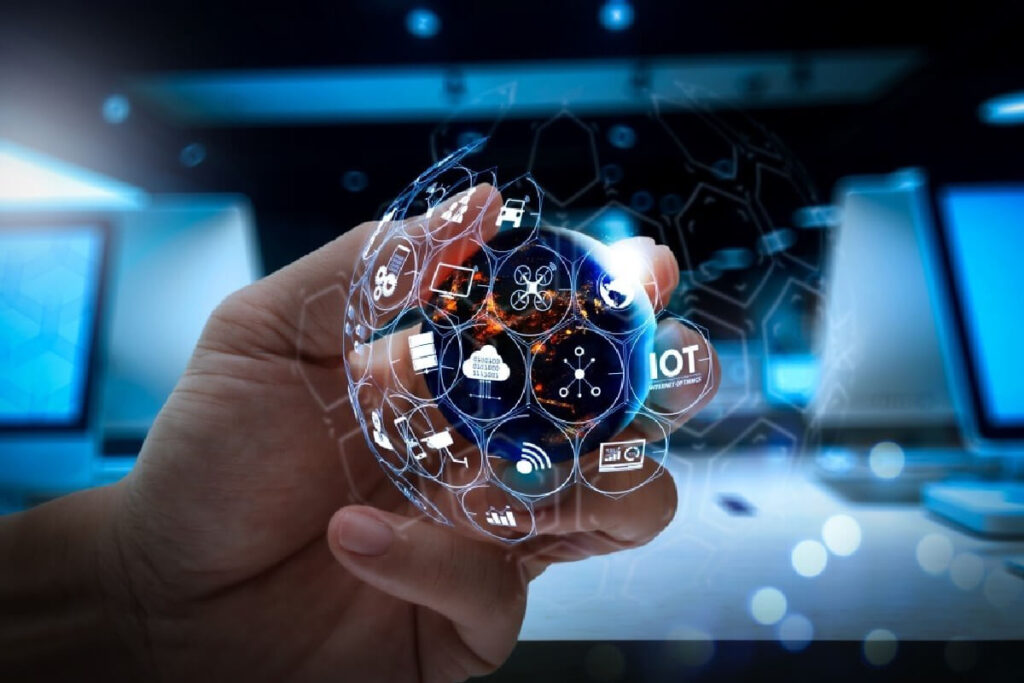We often hear IoT is changing industries, transforming modern businesses, and changing the way entrepreneurs think.
But wait a minute. What is IoT in the first place? We are here to simplify that and much more.
What is IoT?
IoT is an abbreviation of the term “the internet of things” sounds smart, well yes it is.
The ‘internet of things’ is a system of integrated computing devices with inbuilt sensors that ‘talk’ to the cloud via some kind of connectivity.
That’s quite simple.
Well, yes that’s what IoT is in a layman’s language.
Now let’s dive deeper.
The devices with the inbuilt sensors are connected to an IoT platform that performs a kind of data assimilation, evaluation and an integration process. It then applies analytics to reach a statistical conclusion of figuring out the valuable insight for the apps to help them address and improve specific system or user needs.
While that’s quite a mouthful, it’s easy to understand.
IoT technologies often refer to a network of objects or so-called “things” that are embedded with a custom software forming a kind of a digital ecosystem which is created exclusively to connect and exchange data with other counterpart systems and servers over the internet.
Why IoT ?
The bottom line is..
IoT can be applied to any industry vertical, or any of the physical systems to make it perform ‘smarter’. Which is practically the need of every modern industry.
How does IoT work?
The digital or mechanical systems that collect and assimilate data are tagged with unique identifiers or UIDs. That helps them to transfer data fast and seamlessly without any need of manual human intervention or any human to computer interaction, which makes it quite error free and reliable.
IoT devices use mini computer processors that act on the data collected via machine learning. It’s a large web chain of interconnected devices which processes and collects huge amounts of data every day. It’s a digital multiverse of sorts.
IoT works in real time. Often when you’re out for a nearby meeting and your phone notifications show the nearest gas station, nearest retail shops, navigation routes etc wondering how that happens? Well that’s a living example of IoT.
Did you know?
A whopping 97% of businesses will use some form of IoT by 2025. Among current IoT businesses almost 89% believe it’s critical to their success.
That’s why it’s often also called the internet of everything. (IoE)
IoT includes sensors and processors in mobile phones, washing machines, smart TVs , wearables, tablets, smart bulbs, or any electronic devices that can wirelessly connect to each other via machine to machine (M2M) connection.
That makes syncing all your devices to an user account work seamlessly.
The devices that connect to an IoT platform collects data from all synced devices and it is then used to improve the UI and suggest specific needs.
Not all data is useful, these smart devices select specific data that is relevant to execute a particular action. This happens via analytics and algorithms. This piece of information then forms a statistical conclusion which helps it develop patterns, behaviors, recommendations, troubleshooting, etc based on past user interactions.
IoT makes smart smart systems ready for real time automation.
The 4 steps and main components that make IoT work are-
Device Sensors.
The first step starts with device sensors which collect data from the environment and user history. This digital environment can often be very complex. But IoT systems are smart enough to collect even the slightest sensitive changes in user interface. This data is stored for evaluation and predicts future actions. For example phones have inbuilt GPS sensors that track every move and location changes, etc.
Connection.
The collected data is transferred real time to a cloud infrastructure (the IoT platforms) via the internet available through either bluetooth hotspots , Wi-Fi, WAN, or cellular networks, etc.
The effectiveness of IoT depends solely on the internet connectivity speed and availability for the largest part. Although these devices can store data with no internet that can be used for later processing when it’s online.
Data
The cloud infrastructure analyses the data. This is the most critical step. The device action is based solely on this analysis. For example, in security automation or device controls . This process is developed to work at real time speed to ensure enhanced security and immediate action.
User interface
The last step is alerting the user of the action completion via notifications or system alerts.
Now it’s easy to understand how IoT works.
IoT is everywhere.
It’s used widely in e-commerce to predict sales, and restock supplies, to enable smart homes, transport, self-driving cars, fitness devices etc.
IoT benefits?
Well, IoT is the future that can help make industries efficient and reduce service wastes and errors ensuring a perfect user experience every time. Making the world a smarter place .
Technosphere an IOT focused company designs smart IOT products and industry specific IOT solutions using multiple sensors and embedded technologies.The company is promoted by industry leaders with significant experience in Electronic Product Development and Engineering. Technosphere has office locations in Bangalore, India and Dallas, USA.

